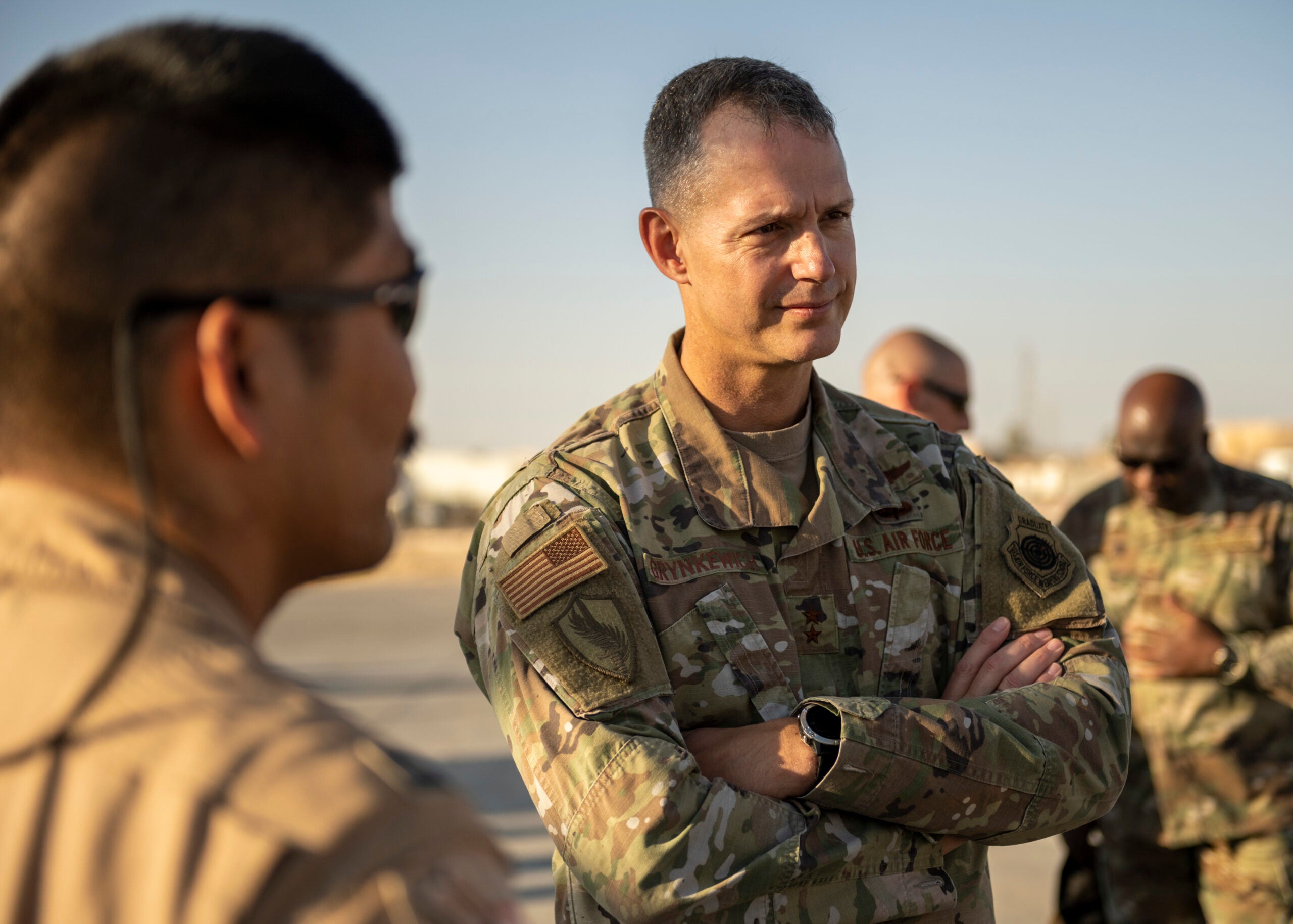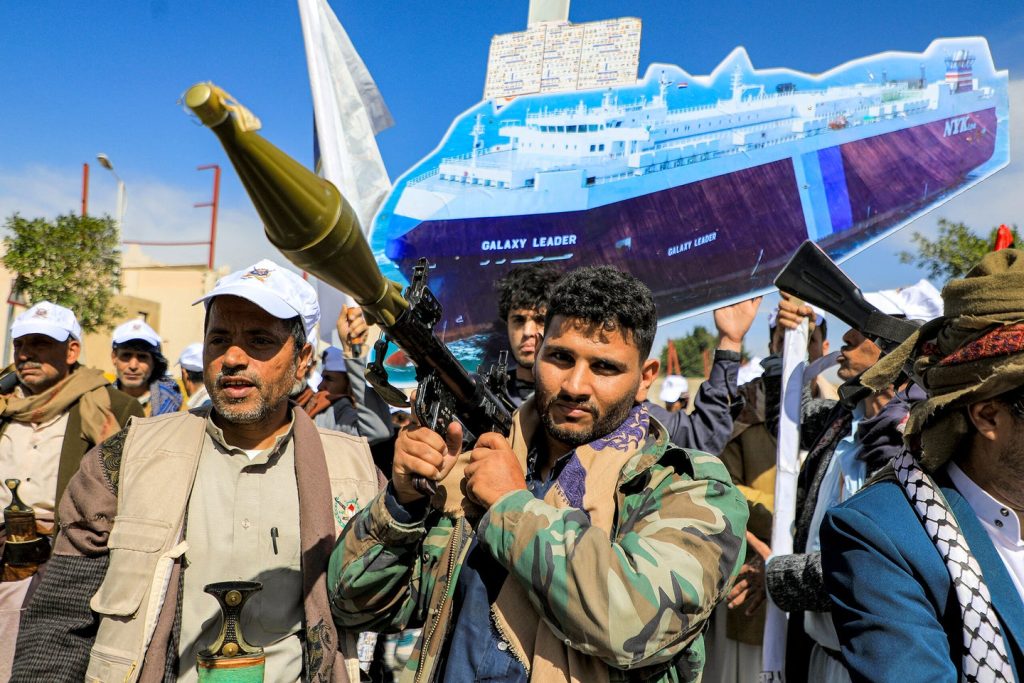U.S. officials are looking at a decline in Iranian-backed militia attacks in the Middle East, the direct Air Pressure commander in the region advised reporters Wednesday.
While the threats on troops in Iraq and Syria and professional ships transiting in the Red Sea are hundreds of miles aside, U.S. retaliation in February against Iranian factors has lessened the battling power and arsenals of the militias, explained Lt. Gen. Alexus G. Grynkewich, who oversees the air part of U.S. Central Command.
“They have missing some of their capabilities. We’ve absolutely influenced their conduct. Their speed of functions is not what it was but the Houthis are unquestionably capable of continue to threatening in the Crimson Sea and we’ll carry on to do the job that,” Grynkewich explained.
Grynkewich also said a January attack that killed a few U.S. troopers in Jordan represented a “new and different” tactic by the Iranian militias from prior months.
Attacks drop in March
Grynkewich stated that U.S. forces have viewed minimized attacks in equally the Crimson Sea and Syria after two big U.S. strikes in February. While the Houthis have ongoing to launch a person-way attack drones in the Pink Sea during March, their momentum has slowed. In Jordan and Syria, CENTCOM reported no attacks on U.S. troops in March.
“It sends a extremely very clear sign, I feel, to the Iranians that they’d crossed the line with the dying for American soldiers at Tower 22,” Grynkewich stated. “It was the volume and the actuality that we were keeping Iran instantly for account with some of the targets that we went following.”
The risk in direction of American troops who are stationed in the location for counter-ISIS missions arrived at a peak in January with a drone assault on provider members stationed at Tower 22, a U.S. outpost on the Jordan-Syria border that killed three National Guard soldiers. In reaction, the U.S., along with partners and allies in the region, struck much more than 85 targets joined to militias and Iran’s military, together with command and management facilities, intelligence facilities and weapons storage services applied to assault U.S. and coalition forces, in accordance to the Department of Defense.
The drop in assaults in Syria and Iraq in March marks a big shift from mid-Oct, when Iranian-backed militias introduced a marketing campaign that finally surpassed 170 attacks on U.S. troops in Iraq and Syria. In the similar time interval, Houthi rebels in Yemen, also backed by Iran, released above 55 assaults on intercontinental ships in the Pink Sea. Although most of the missiles, drones and rockets launched toward ships or U.S. personnel have been shot down, the attacks scrambled both of those U.S. sentiment on the area and global transport.

“Their narrative is that this is about Israel and Gaza and the Palestinians but they haven’t provided a single loaf of bread to aid with the humanitarian disaster in Gaza,” Grynkewich explained. “To me, this is seriously about the Houthis seeking to construct their very own notoriety and their possess electricity foundation and very little to do with the situation in Gaza. They’re exploiting the condition for their individual finishes.”
But more than the final thirty day period, there has been a sluggish down in the range of drones, missiles and rockets introduced in direction of U.S. armed forces assets and professional ships sailing via regional waters. The most up-to-date publicly claimed incident was on Monday, exactly where the U.S. shot down an unmanned floor vessel in the Pink Sea, according to CENTCOM.
The obstacle that remains for U.S. officers searching for to deter or avoid long term attacks, he stated, is figuring out the measurement of the Houthis weapon supply that they commenced their attacks with. Given that November, the Houthis have expended around 75 missiles, cruise missiles and anti-ship ballistic missiles, in accordance to Grynkewich.
“We clearly know how substantially we have striking, we have assessments of how profitable all those strikes were being,” Grynkewich explained. Nonetheless, Iranian resupplies to militias in the region remain a trouble.
Subscribe to Endeavor & Purpose today. Get the most current armed service information and lifestyle in your inbox day-to-day.
“We have noticed modifications in their actions – the pretty massive swarms of UASs that they’ve accomplished in the earlier, they are unable to maintain people regularly,” he stated. “With their anti ship ballistic missiles – we don’t know particularly how lots of they had in advance of the conflict began. We know it was most likely dozens, would be the way I’d characterize it. They shot, now, dozens of them, so the fee of resupply is anything that we’re attempting to realize.”
Tower 22 attack was ‘new and different’
Despite the sluggish down in drone, rocket and missile incidents, the U.S. is nevertheless learning from its failure to stop the attack on al-Tanf garrison at Tower 22 which Grynkewich explained as unexpected.
“We took a shut glimpse at what our defensive architecture was, what our assumptions have been about the place the Iranians had been ready to direct the militias to hit us,” he mentioned, including that an attack on Tower 22 in Jordan “was new and distinct.”
He did not give information on CENTCOM’s new stability updates and capabilities for the foundation thanks to “operational safety explanations and to guard our forces that are over there benefiting from any changes we may well have manufactured.”
Nonetheless Grynkewich did give perception into the military’s “layered ISR selection strategy” which has aided in CENTCOM’s preemptive or “self-defense” strikes on Iranian-backed teams. With imagery from countrywide resources like NASA-operated satellites as effectively as airborne assets like MQ-9 Reaper drones, officers will glance for “telltale signs” that some thing is established up or all set to be launched, he claimed.
“We variety of pull all that jointly and then we have a small cell that fuses [data] really speedily. As tipping and queuing arrives in, we can even quickly re-endeavor assets to get a nearer glance at it,” he reported. “Sometimes that’s backed up by other intelligence that we have an understanding of some of the intent behind what we may possibly be viewing.”
The facts goes by way of the Place Force’s fight management command and manage community. Information will come from the Air Functions Center, get transmitted to whoever the fight manager is and from there it’ll go to the provider strike group or be tasked to the airmen.
Beyond instant military services abilities, Grynkewich pointed out that the U.S. is considering all of its possibilities to prevent a extended time period conflict, which features discouraging habits by exposing information “to embarrass the Iranians.”
“To the extent that you can, you can prevent them by indicating, ‘Hey, we know that you’re part of this’ – I feel that’s a pretty productive way to deal with them,” he stated. “Obviously, there’s other methods you could do it that get into other really classified abilities that we could have that we would use.”
The most up-to-date on Undertaking & Intent
- Air Power particular operators need to choose course before having shaving waivers
- Camp Pendleton Marines encouraged to fix their individual barracks rooms
- 101st Airborne soldiers are 1st to receive new Next Gen Squad Weapon
- Air Power fires commander of Holloman servicing group
- Army investigating Nazi imagery on Special Forces patch posted on-line
The submit U.S. reaction following Tower 22 attacks has slowed militias, commander suggests appeared very first on Task & Objective.
